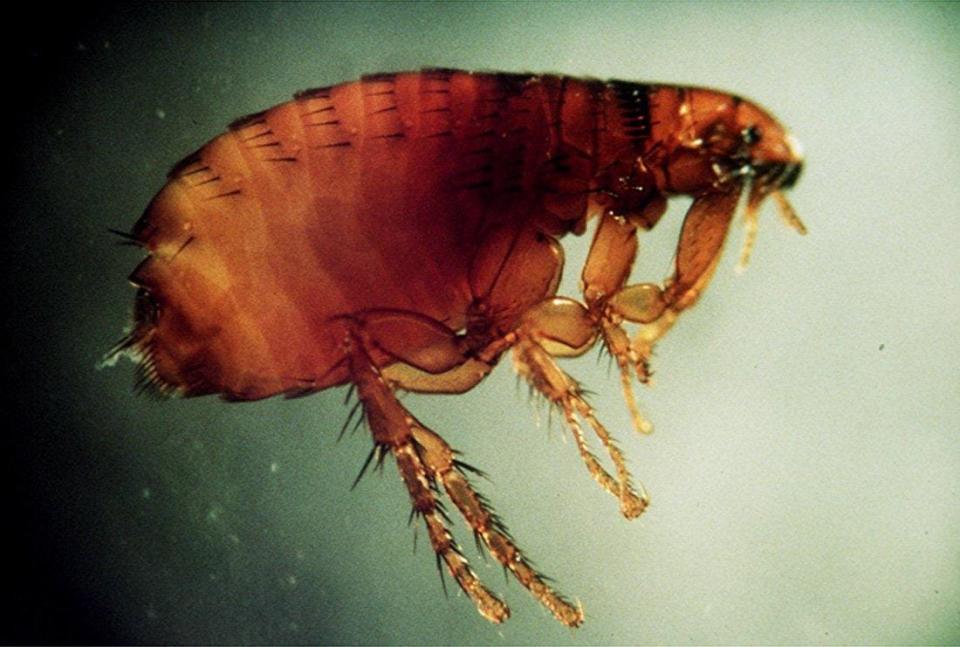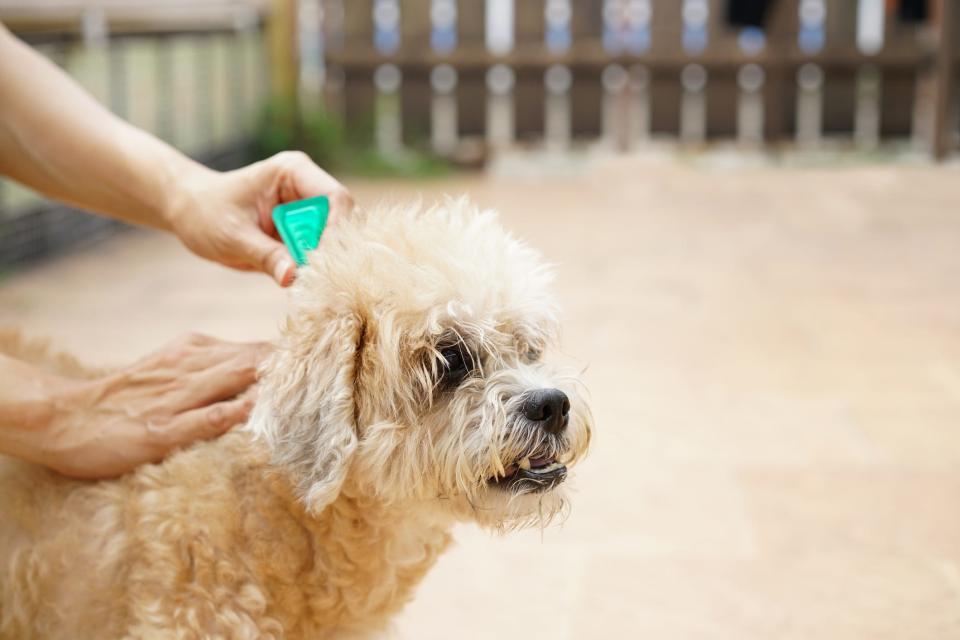Scrub Hub: How do we get rid of these fleas?
Fleas, the pinhead sized bane of pets and pet owners alike, begin spreading into households across Indiana from mid to late summer.
Thousands of flea species exist out there, but the most common kind that ends up infiltrating homes across the state are Ctenocephalides felis, or cat fleas — and yes, they unfortunately affect dogs, too.
These pests aren’t just responsible for excessive itching and scratching, fleas also carry diseases and were responsible for spreading the largest pandemic in human history: the Black Plague.
Pet stores stock a veritable arsenal of powders, soaps, collars, combs and ointments meant to curb flea infestations. So here at Scrub Hub, we set out to look at some of the best ways to keep fleas out of the yard — and out of the house.

We spoke with a veterinary expert and a medical entomologist and asked them:
How can I keep fleas out of my house and yard and what are some of the complications the pests can cause?
Scrub Hub: Are lightning bugs disappearing from Indiana's night skies?
Short answer
The bad news first: There’s no single, surefire way to curb a flea infestation once a pet owner notices a problem.
Marc Lame, emeritus professor at Indiana University and medical entomologist by training, said an integrated management solution is the best path forward. This means attacking the little buggers on multiple fronts.
Begin by inspecting pets for fleas if they seem to be scratching more often that usual.
“We believe in monitoring,” Lame said. “Usually, mid- to late summer is when we start seeing increases in flea infestations.”
Once a flea infestation is identified, the work beings.
Scrub Hub: What is mosquito control, and does it hurt the environment?
Wildlife and strays bring fleas to our backyards from raccoons, possums and squirrels and other small mammals that all provide good hosts for fleas.
One way to stop flea infestations before they start is reducing the pets’ contact with these animals or where they are commonly found as well as not feeding strays, Dr. Paulo Gomes, a clinical assistant professor at Purdue University said.
Both Gomes and Lame say vacuuming more often is necessary. Take care to clean couches and pet beds to help get rid of flea eggs and the younger stages of fleas.
“Vacuuming is very important,” Gomez said. “Dispose the dirt in a sealed plastic bag or trash bag.”

The next step is applying some kind of pesticide to the pets. Remember to apply it to all pets, Gomes said, not just the one showing signs.
Lame said he uses a flea and tick collar on his dog and if he finds fleas, he’ll use a flea powder on the animal’s bed.
Gomes said there are active ingredients in some over-the-counter applications that work well, including: pyriproxyfen, pyrethrins and permethrin (see warning about cats below).
Read the labels and follow them carefully, Gomes said. Kittens and puppies will require extra caution, and some of the ingredients can be toxic to cats.
“You need to be careful with cats because they are naturally more susceptible to toxic effects,” Gomes said. “Permethrin is very toxic for cats so should be avoided.”
Tick season: Here are tips to protect against the blood-sucking bugs
Long answer
If a pet owner notices fleas on a pet, they’re only seeing about 1-5% of the population living in the home, Gomes said.
“The other 95 percent are immature stages of the flea lifecycle in the form of eggs, larvae and pupi,” Gomes said. “What you don’t see on the animal is in the environment.”
Fleas have what is known as a complete life cycle, which is starting as an egg, becoming a larvae, then a pupa then and adult, Lame said.
Each egg takes a few days to hatch, then the larva molt and grow bigger a couple of times, Lame said. This is usually done off the animal as the only stage a flea is on an animal is during the adult stage. Any eggs the adults lay drop off the body, typically where the animal spends the most time.
Lightning bugs or fireflies: What are those glowing insects called?
Once the eggs hatch and become larvae, typically where the animal sleeps, the reach the final stage before adulthood and form cocoons that can hatch in 3-6 days. Or, if the conditions are not right, the cocoons can stay viable for about 175 days.
Once an adult emerges from the cocoon it will have to have a blood meal from a host, usually with 36 hours of becoming an adult.
An adult flea can lay 40-50 eggs per day, or up to 3,000 eggs in its lifetime.
This can make a small problem big in a short period of time. Gomes said fleas are very efficient reproductive machines.
“That’s why cleaning indoors is important,” Gomes said. “Removing immature stages from the environment and trying to avoid them becoming adult fleas.”
Once fleas enter the house, it can take up to 12 weeks to completely get rid of the infestation, so vigilance is important.
One of the most common signs of fleas, aside from scratching excessively, is flea dirt, or the feces left behind by fleas after a blood meal. This can look like small dark flecks of pepper.
Pet owners should also know fleas can be more than just a pest, they can carry infections and some types of typhus.
Typical symptoms in a pet may include fever, lack of appetite, depression, lameness and coughing, Gomes said.
More: White-nose syndrome is killing Indiana bats. Colder caves might save the vital bug eaters
There are usually annual outbreaks of murine typhus, which affects humans and is caused by fleas, Lame said. It’s usually not fatal but causes symptoms similar to the flu. Scientists are seeing increasing outbreaks of insect-borne diseases.
In certain areas of the country, climate change effects are making conditions for fleas more conducive,” Lame said.
Hotter summers that go into warmer falls allows flea populations to last longer. Climate change effects are also moving small animals that host fleas.
“We are now seeing more spread of the Oriental rat flea associated with climate,” Lame said. “Climate change is basically allowing animals of all kinds and diseases of all kinds to expand their ranges and extend the periods of time they are out there so more generations are able to mate and get higher populations.”
The bugs have been marching one by one in these last few editions of Scrub Hub as summer peaks and the creepy crawlers become more prevalent. Readers with questions about bugs or (hopefully) anything else related to the environment here in Central Indiana should fill out our form below and online.
Can’t see the form? Click here.
Karl Schneider is an IndyStar environment reporter. You can reach him at karl.schneider@indystar.com. Follow him on Twitter @karlstartswithk
IndyStar's environmental reporting project is made possible through the generous support of the nonprofit Nina Mason Pulliam Charitable Trust.
This article originally appeared on Indianapolis Star: Cat fleas: How do we get rid of these pests?

